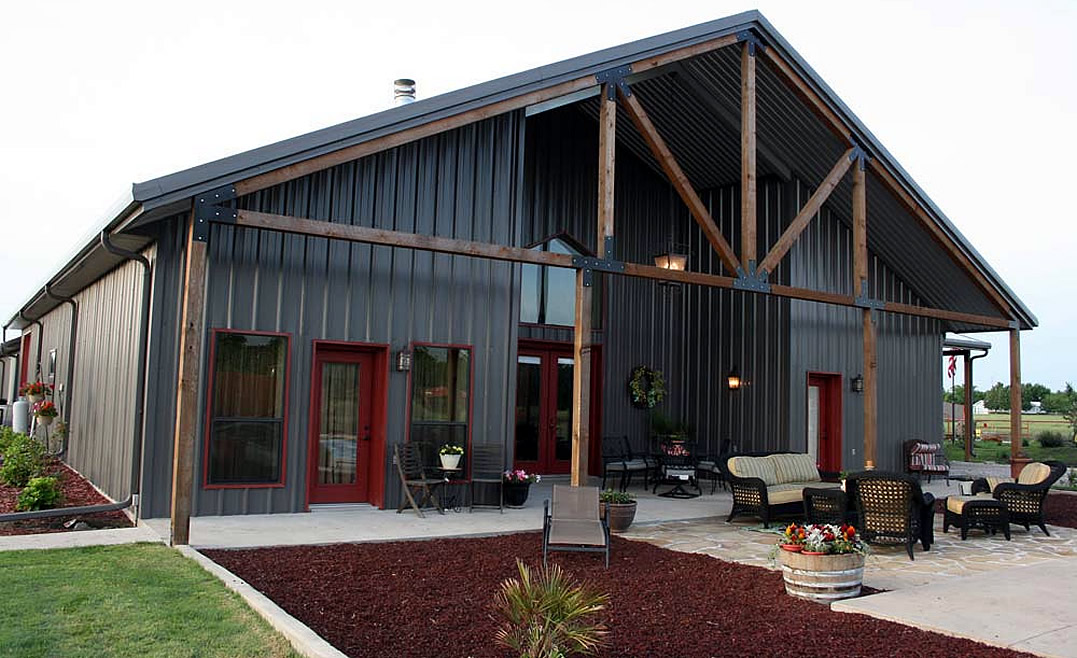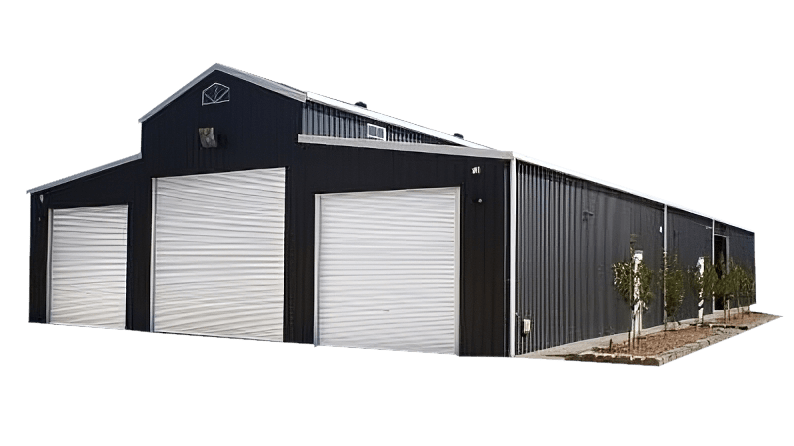Specialist Overview to Steel Building Style: Maximizing Efficiency and Durability
In the realm of construction, the choice of structure product holds extremely important significance in determining the efficiency and durability of a framework. Steel, with its extraordinary toughness, sturdiness, and adaptability, has actually become a preferred alternative for modern building style. Engineers and architects are continuously discovering innovative ways to harness the capacity of steel in building lasting and long-lasting buildings. From optimizing style considerations to applying cost-effective building methods, the trip in the direction of optimizing efficiency and longevity in steel building style is a diverse one, using a mix of practical difficulties and innovative options that propel the industry ahead.
Advantages of Steel Structures
Steel structures offer unrivaled toughness and cost-effectiveness compared to standard building and construction materials. The stamina of steel provides superb structural integrity, making it a recommended selection for buildings that require to endure rough weather problems or hefty lots.
In terms of cost-effectiveness, steel buildings are usually much more inexpensive than frameworks made from various other products. The efficient building procedure of steel structures can result in decreased labor expenses and much shorter task timelines. Steel's longevity also equates to decrease maintenance costs in time, as there is much less need for fixings or replacements contrasted to conventional building materials.
Design Factors To Consider for Efficiency
Offered the benefits of steel buildings in terms of durability and cost-effectiveness, it is essential to concentrate on style considerations that maximize performance and durability. When designing a steel structure for optimal efficiency, aspects such as the insulation, layout, and alignment need to be very carefully considered.

In addition, including energy-efficient systems, such as heating and cooling, lights, and renewable energy sources, can additionally improve the performance of steel structures. By incorporating these layout considerations, steel structures can accomplish optimal effectiveness and long life, offering cost-efficient and sustainable options for numerous building and construction jobs.
Architectural Stability and Longevity

Regular upkeep, including examinations for indicators of wear or damage, is additionally critical for recognizing and resolving problems prior to they jeopardize the building's stability. By prioritizing structural honesty in the design stage and throughout the structure's lifespan, proprietors can guarantee their steel structures remain risk-free, efficient, and durable for years to come.
Economical Construction Methods
Efficient construction methods play a critical role in managing costs without compromising the quality and integrity investigate this site of steel structure tasks. In addition, pre-engineered steel structures are recognized for their durability and require minimal upkeep, resulting in lasting cost savings.
One more economical strategy is the design-build approach, where the layout and construction stages are incorporated. This approach cultivates collaboration between the style and building and construction teams, improving the procedure and decreasing hold-ups and cost overruns (steel buildings). dig this By including all stakeholders from the start, prospective concerns can be determined and dealt with early, conserving both money and time
Moreover, taking on sustainable construction methods, such as making use of recycled steel and integrating energy-efficient features, can result in significant expense savings in the lengthy run. These practices not just decrease building and construction waste however likewise reduced operational prices through improved energy effectiveness. Finally, executing cost-efficient construction methods is necessary for maximizing effectiveness and ensuring the long life of steel building projects.
Upkeep Tips for Long Life
Proper maintenance practices are essential for guaranteeing the long life and structural stability of steel buildings. Routine examinations are necessary to recognize any kind of indicators of rust, damage, or wear that could jeopardize the building's durability. As component of a detailed maintenance strategy, it is essential to promptly attend to any kind of problems that occur to stop them from intensifying and causing extra comprehensive damage.

One more vital maintenance suggestion is to inspect the structure's bolts, connections, and welds to ensure they are safe and secure and in good problem. Any kind of damaged or loosened elements need to be fixed or replaced without delay to maintain the structural stability of the building. By implementing a like this positive maintenance regimen, steel structure owners can make best use of the longevity and performance of their frameworks.
Conclusion
In verdict, steel buildings offer countless benefits such as cost-effectiveness, effectiveness, and longevity. By meticulously considering layout facets, making certain structural integrity, and utilizing cost-effective construction methods, steel structures can be optimized for optimal performance and durability.
From optimizing layout factors to consider to implementing cost-effective building and construction techniques, the journey in the direction of making the most of performance and long life in steel structure design is a multifaceted one, providing a mix of sensible challenges and imaginative options that push the market forward.
Offered the benefits of steel buildings in terms of longevity and cost-effectiveness, it is vital to focus on layout considerations that maximize efficiency and durability. When creating a steel building for optimal effectiveness, elements such as the positioning, insulation, and format should be carefully considered. In final thought, applying affordable building approaches is essential for maximizing effectiveness and ensuring the longevity of steel building jobs.
By carefully taking into consideration design facets, making certain architectural integrity, and using cost-efficient building methods, steel buildings can be enhanced for optimal efficiency and durability.